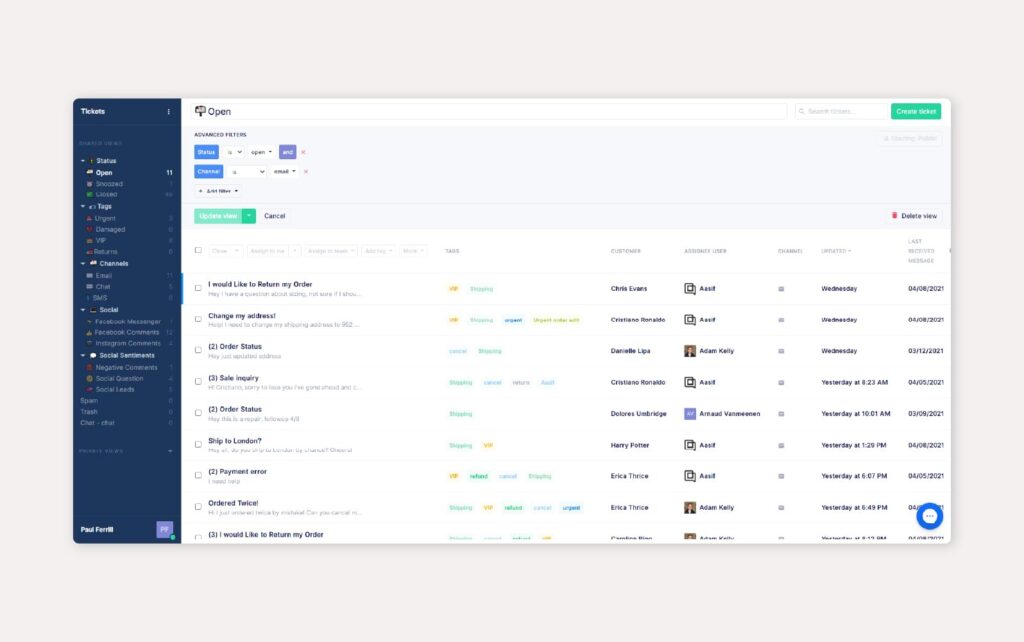PHP is a widely-used server-side scripting language that is perfect for building real-time customer support tools. With its robust features and ability to interact seamlessly with databases, PHP makes it easy to create dynamic and responsive applications for assisting customers in real time. By harnessing the power of PHP, businesses can provide efficient and effective support services to their clients, enhancing customer satisfaction and loyalty.
Building a real-time customer support tool is essential for businesses looking to provide efficient and prompt assistance to their customers. With PHP, a versatile and powerful programming language, developers can create a robust and feature-rich customer support tool. In this article, we will explore the benefits of using PHP for building a real-time customer support tool and highlight some key features that can enhance the overall customer experience.
Why Choose PHP?
PHP, known as an acronym for “Hypertext Preprocessor,” is a widely-used open-source scripting language with a vast community of developers. It has gained immense popularity due to its simplicity, flexibility, and extensive support for web development. Here are some compelling reasons to choose PHP for building a real-time customer support tool:
1. Easy Integration
PHP seamlessly integrates with popular web technologies, making it an ideal choice for building a customer support tool. It can easily communicate with databases, web servers, and other web services, allowing for efficient data retrieval and management. This integration makes it simple to build real-time features, such as live chat and message notifications, to enhance the customer support experience.
2. Wide Range of PHP Frameworks
PHP offers a wide range of frameworks, such as Laravel, Symfony, and CodeIgniter, which provide a structured and organized approach to building web applications. These frameworks come with built-in tools and libraries that simplify the development process and improve the overall performance and security of the customer support tool.
3. Rich and Active Community
PHP has a large and active community of developers who contribute to its growth and improvement. This community provides extensive documentation, tutorials, and forums, making it easier for developers to find solutions to their queries. Additionally, the constant development and update cycle of PHP ensures that new features and security patches are regularly released, keeping your customer support tool up-to-date and secure.
Key Features for a Real-Time Customer Support Tool
When building a customer support tool, there are several key features that play a crucial role in providing an efficient and seamless customer experience. Let’s explore these features and how PHP can be leveraged to implement them:
1. Live Chat
Live chat functionality allows customers to interact with support agents in real-time, enabling quick issue resolution and improving customer satisfaction. PHP, with its seamless integration capabilities, can be used to implement live chat by leveraging web sockets or AJAX requests to update the chat window instantly. This ensures a smooth and uninterrupted conversation between the customer and the support agent.
2. Ticketing System
A ticketing system helps manage and track customer support requests effectively. PHP, along with a suitable framework, can be utilized to create a ticketing system that allows customers to submit support tickets, assigns them to the relevant support agents, and tracks the progress of each ticket. Database integration in PHP can ensure the storage and retrieval of ticket information, while the framework can handle the routing and organization of the tickets efficiently.
3. Knowledge Base
A knowledge base provides customers with self-help resources, such as FAQs, guides, and articles, to find solutions to common issues without contacting support. PHP can be used to create and manage a knowledge base by dynamically generating pages based on the stored information in a database. The search functionality can be implemented using PHP to allow customers to quickly find relevant articles and guides.
4. Notifications
Real-time notifications play a vital role in keeping customers informed about their support requests, updates, or any other important information. PHP, in combination with JavaScript, can be utilized to implement push notifications, email notifications, or SMS alerts, ensuring that customers are always kept in the loop regarding their support queries.
5. Analytics and Reporting
Understanding customer support performance is crucial for continuous improvement. PHP can be used to collect and analyze data related to customer support, such as response times, ticket resolution rates, and customer satisfaction ratings. This data can be displayed using charts and graphs, which can be generated using PHP libraries like Chart.js or Google Charts, providing valuable insights to support teams.
PHP offers a wide range of capabilities and features that make it an ideal choice for building a real-time customer support tool. Its easy integration, robust frameworks, and active community ensure a smooth and efficient development process. By leveraging PHP’s features and combining them with other web technologies, businesses can create a powerful and user-friendly customer support tool that enhances customer satisfaction and loyalty. So, consider using PHP when developing your real-time customer support tool and unlock its potential to deliver exceptional support experiences.
PHP is a versatile and powerful programming language that can be effectively utilized for building a real-time customer support tool. Its wide range of libraries, frameworks, and robust features make it a popular choice for creating dynamic and responsive applications that meet the demands of modern customer service needs. By leveraging PHP’s flexibility and scalability, developers can deliver a seamless and efficient customer support experience to enhance user satisfaction and drive business success.













